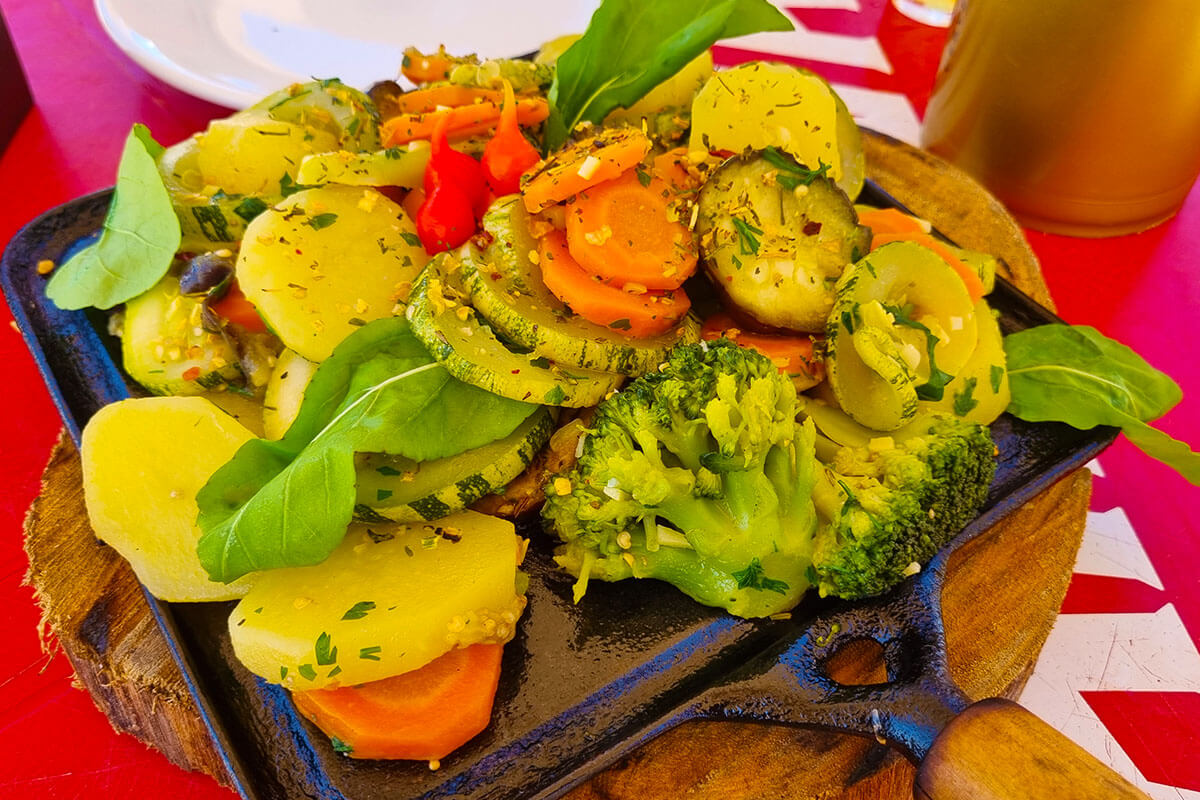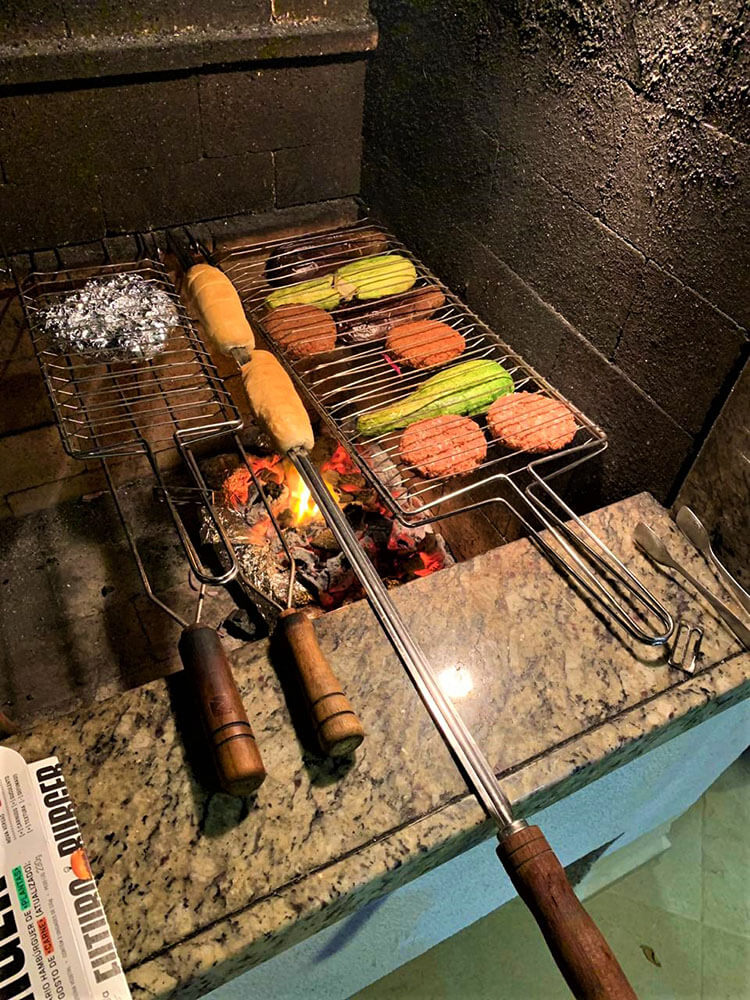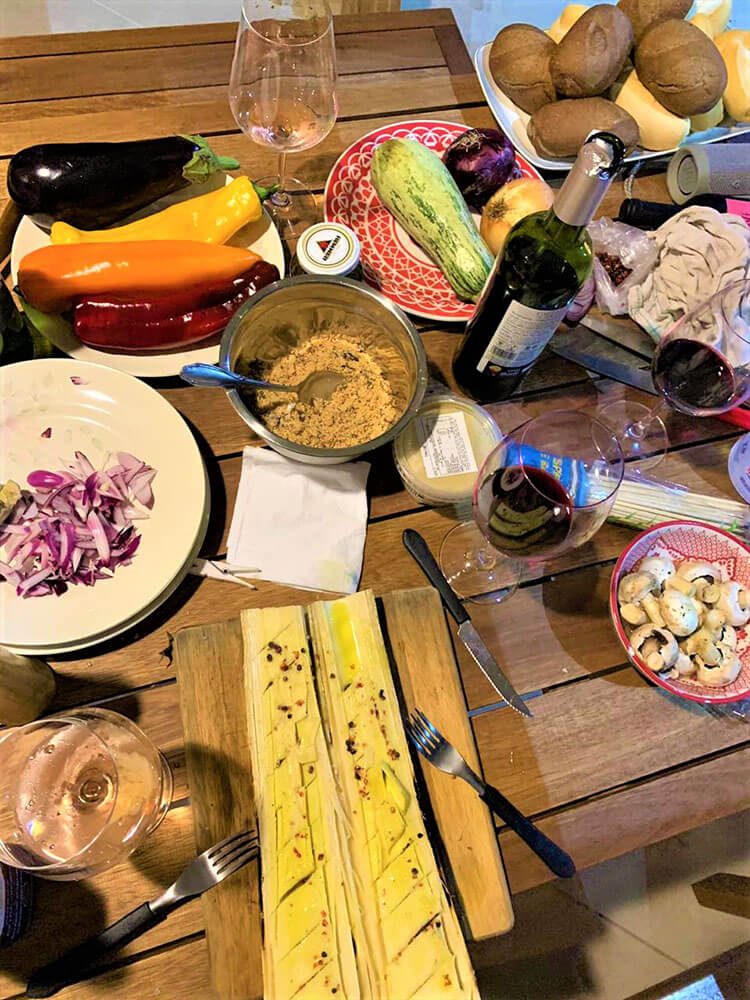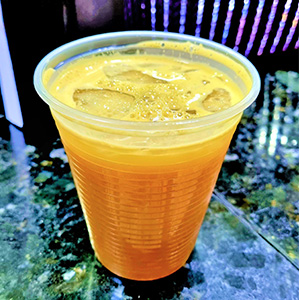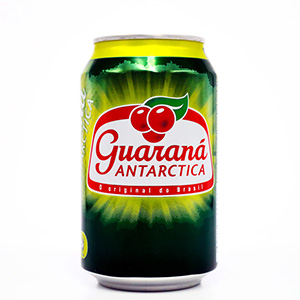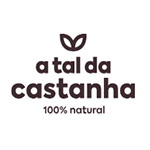Calling all vegan travelers! If you’re heading to the land of samba and you crave an authentic local culinary experience, don’t look any further. In this comprehensive guide to vegan food in Brazil, I’ll unveil the treasures of my country’s traditional cuisine.
Get ready to discover mouthwatering delicacies and receive invaluable tips for finding the best vegan Brazilian snacks, side dishes, main courses, desserts, and drinks.
Veganism in Brazil
Before diving into the food, it’s important to understand the landscape of veganism in Brazil:
- 14% of Brazilians (30 million) declare themselves vegetarian, and it’s estimated that 33% of those (7 million) are vegan, according to data from Sociedade Vegetariana Brasileira (the Brazilian Vegetarian Society) and a survey conducted by IBOPE in 2018.
- The same survey states that there was a growth of 75% in the population that declared itself vegetarian in metropolitan regions, when compared to the same survey conducted in 2012.
- Although I couldn’t find more recent official data (sorry!), I’m sure these numbers keep increasing. Having lived abroad for many years, I’m glad that every time I visit my home country I find new vegan-friendly stores and vegan restaurants in Brazil.
- While the numbers may seem promising, due to the vast size of Brazil, it’s not uncommon to meet people who have no idea what veganism means. If you’re not in a vegan restaurant, especially outside major cities, be prepared to be offered chicken after you say you don’t eat meat, and hear the classic “but not even fish?”.
Now, let’s delve into the diverse world of vegan Brazilian food that you can find across the country!
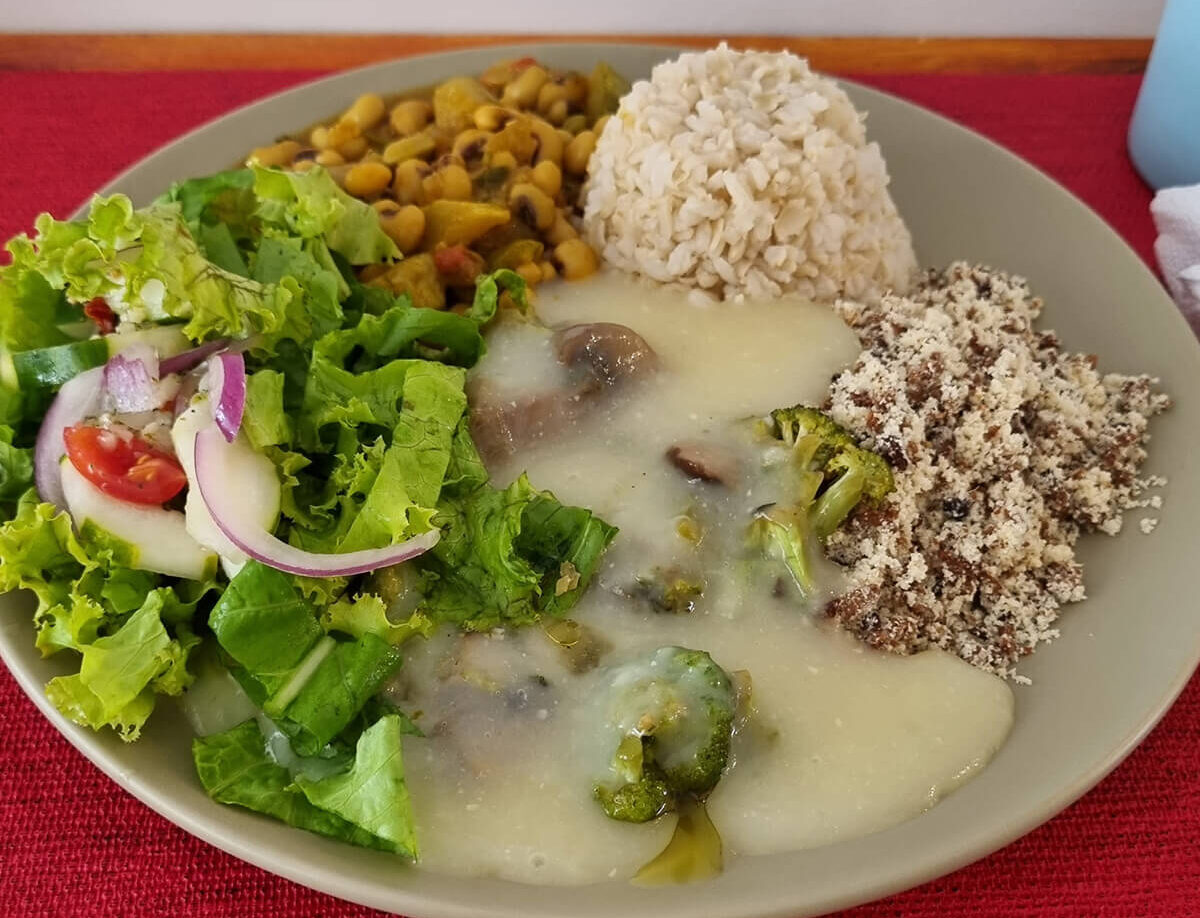
Brazil Vegan Food: A Guide to Traditional Brazilian Cuisine
The typical dishes in Brazil can vary greatly by region. You’ll discover a delightful blend of indigenous ingredients combined with various foreign influences, including African, European (mostly Portuguese, Italian, and German), Japanese, and Arabian.
To help you decide what kind of food to look for on your vegan trip to Brazil, I’ve put together a carefully curated list below.
Traditionally served vegan:
Dishes in this section are almost always served vegan. But, as we can never control whether any unusual ingredients of animal origin have been sneaked into it, double check whenever possible.
Aipim frito (Cassava Fries)
Cassava, a core ingredient in Brazilian recipes, shines in the form of aipim frito (also known as “mandioca frita”). These crispy delights are enjoyed as a bar snack or side dish, especially when paired with a cold beer on a hot day.
To ensure your aipim frito is vegan, ask if they’re not fried in butter nor in oil shared with animal products and that no cheese was added on top.
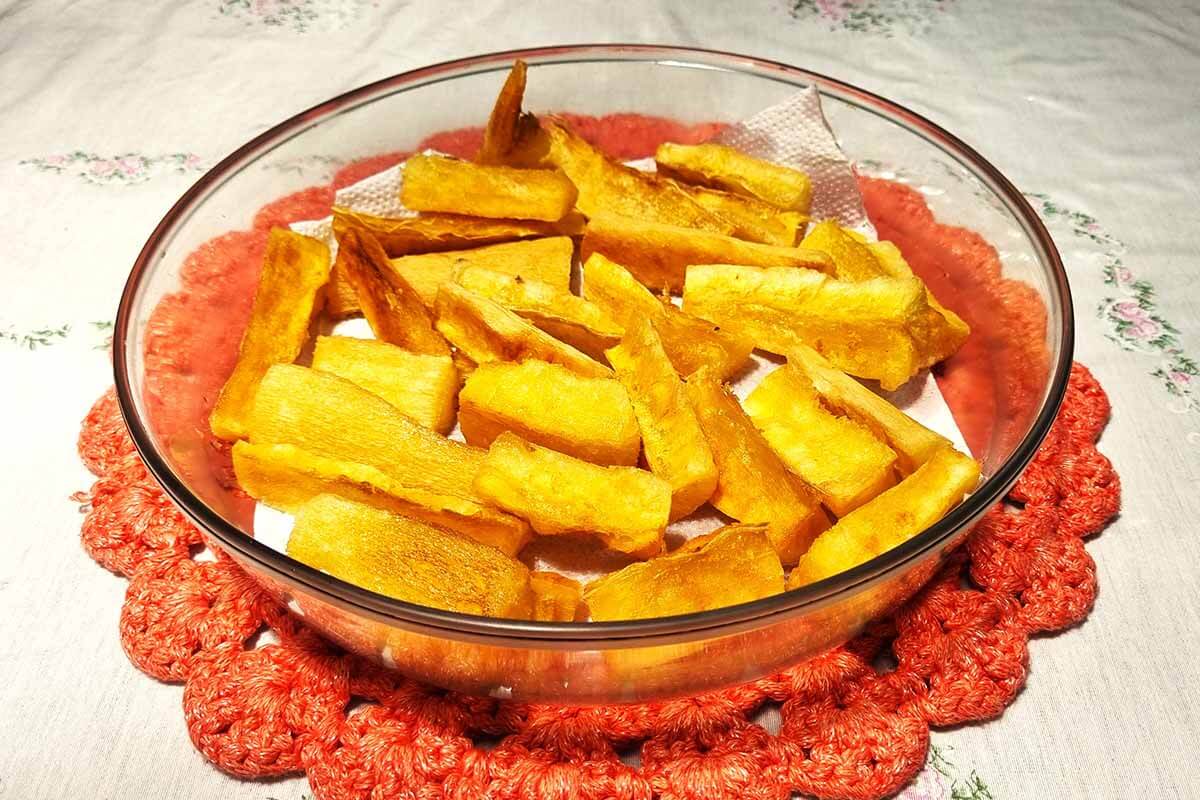
Pinhão (Pine Nuts)
These pine nuts from the Araucaria tree are a popular snack in the South, especially during the winter months. They are usually boiled in water in a pressure cooker and enjoyed just with a sprinkle of salt. Consequently, pinhão is one of the safest options to go for if you’re looking for traditional vegan food in Brazil.
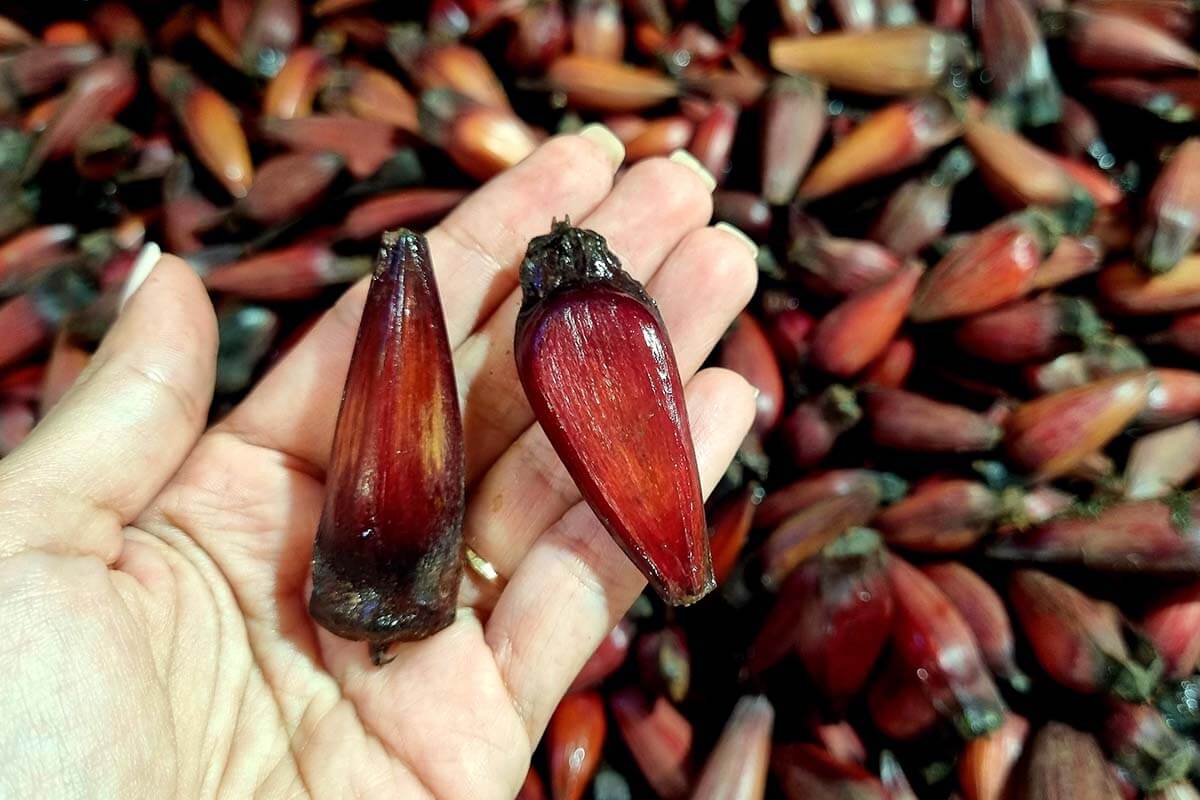
Arroz e Feijão (Rice and Beans)
I’m happy to tell you that the most widespread combination from North to South of the country is vegan! Whether it’s black beans, red beans, carioca beans or other kinds, beans and rice form the foundation of Brazilian meals, gracing the tables of families almost daily… really, we never get sick of it!
You can easily find this vegan dish in most restaurants, but do take care not to mistake them for feijoada. I’ll talk more about feijoada in the Must-Try Traditional Dishes section below, but, basically, if you spot anything other than chopped onions floating in your beans, chances are it ain’t vegan. And despite not being the most common, it’s possible that the rice is sometimes prepared with butter, so it doesn’t hurt to confirm.
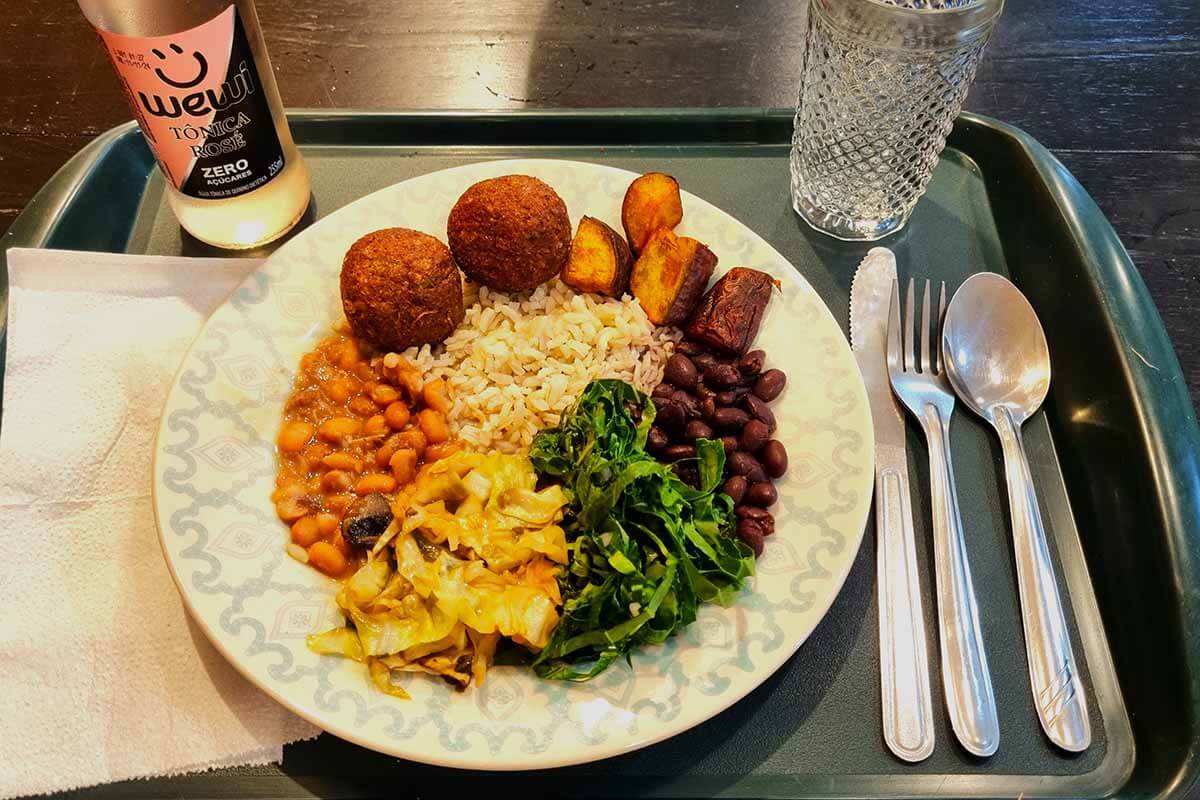
Paçoca (Peanut Candy)
Paçoca is one of the all-time favorite Brazilian treats, even for non-vegans. It’s made with peanuts and has a unique crumbly texture. It can be the star ingredient of more elaborate vegan Brazilian desserts, or simply enjoyed on its own.
Although you can easily find this treat all year round in supermarkets and grocery stores, it’s more often consumed during the Festa Junina, a popular feast celebrated in June and July. It’s like a taste of childhood for me, and I’m not alone in that sentiment: paçoca is one of those must-have items that Brazilians living abroad often ask their fellow compatriots to bring back for them. Once you try it, you’ll understand why it holds such a special place in our hearts!
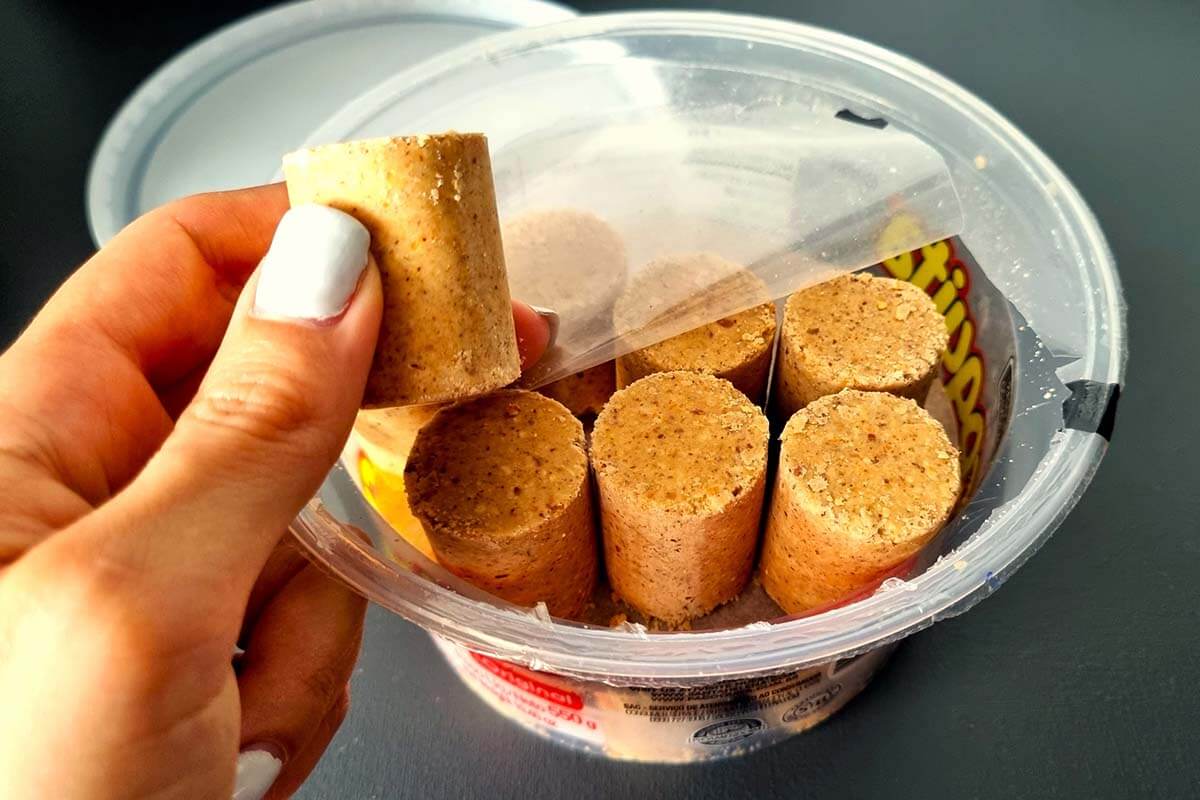
Açaí na Tigela (Açaí Smoothie Bowl)
Alright, let me tell you about the healthiest Brazilian dessert ever: Açaí na tigela! The main ingredient, açaí, is an Amazonian superfood that has gained worldwide popularity. This purple berry is blended into a thick smoothie-like consistency and topped with granola, fruits, and sometimes yogurt and powdered milk (that you can easily skip to have it fully plant-based). Sounds like a guilt-free breakfast for your trip, right?
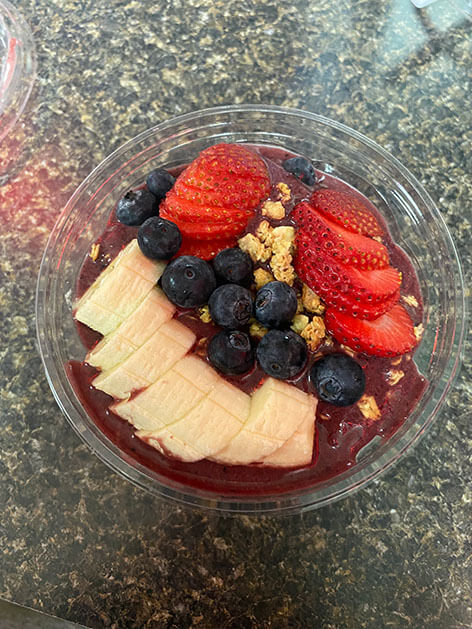
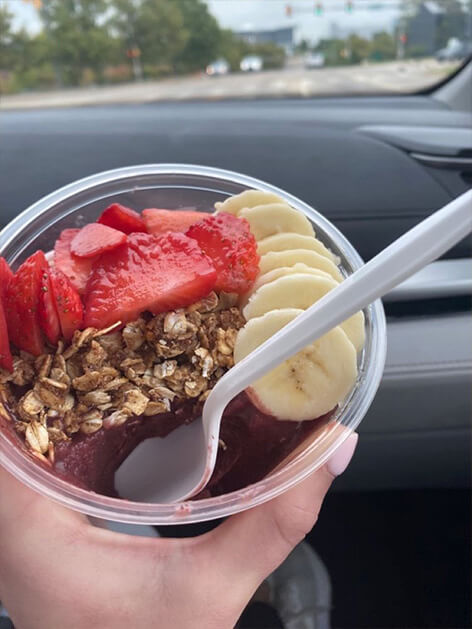
Goiabada (Guava paste)
It is a dense, thick paste with a rich and sweet flavor of guava, its main ingredient. Goiabada is often enjoyed on its own or used as a filling in various desserts, pastries or cakes.
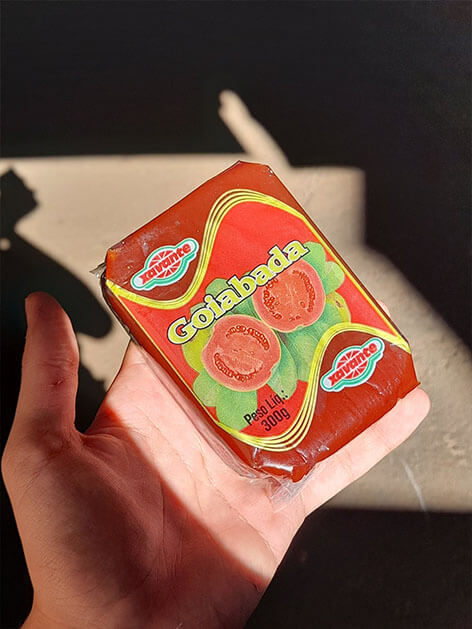

Easy to find vegan:
Pastel de Palmito (Heart of Palm Pastry)
Pastel is undoubtedly a national passion and one of the most beloved street foods in Brazil. It’s deep fried and can have a rectangular or half-moon shape.
While the traditional fillings often include minced meat, chicken or cheese, fear not, because it’s relatively easy to find pastel de palmito. This version tends to be vegan, as the star ingredient is the delicious heart of palm, seasoned with spices and a touch of tomato sauce.
- How to have a vegan pastel: make sure the pastry is free from eggs and that there are no cheese or other dairy products mixed in the filling.
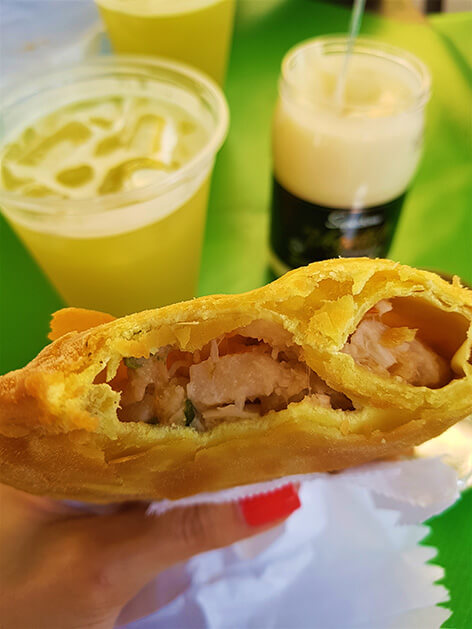
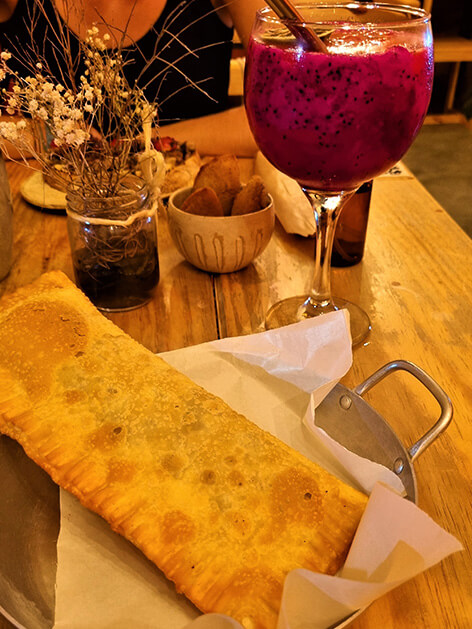
Farofa (Toasted Cassava Flour Mixture)
It’s just incredible how a simple mixture of toasted cassava flour can taste so good. One of the favorite side dishes on Brazilian plates, farofa is perfect to serve with beans, rice, churrasco, stir-fried vegetables and basically any other combination your taste buds call for.
- How to have a vegan farofa: ask for no bacon, no eggs and no butter. My mom’s farofa is the best in the world and completely plant-based: with kale, carrot, onion and garlic. Batata-palha (very thin fried potato sticks) is another classic of Brazilian cuisine that goes deliciously well with farofa.
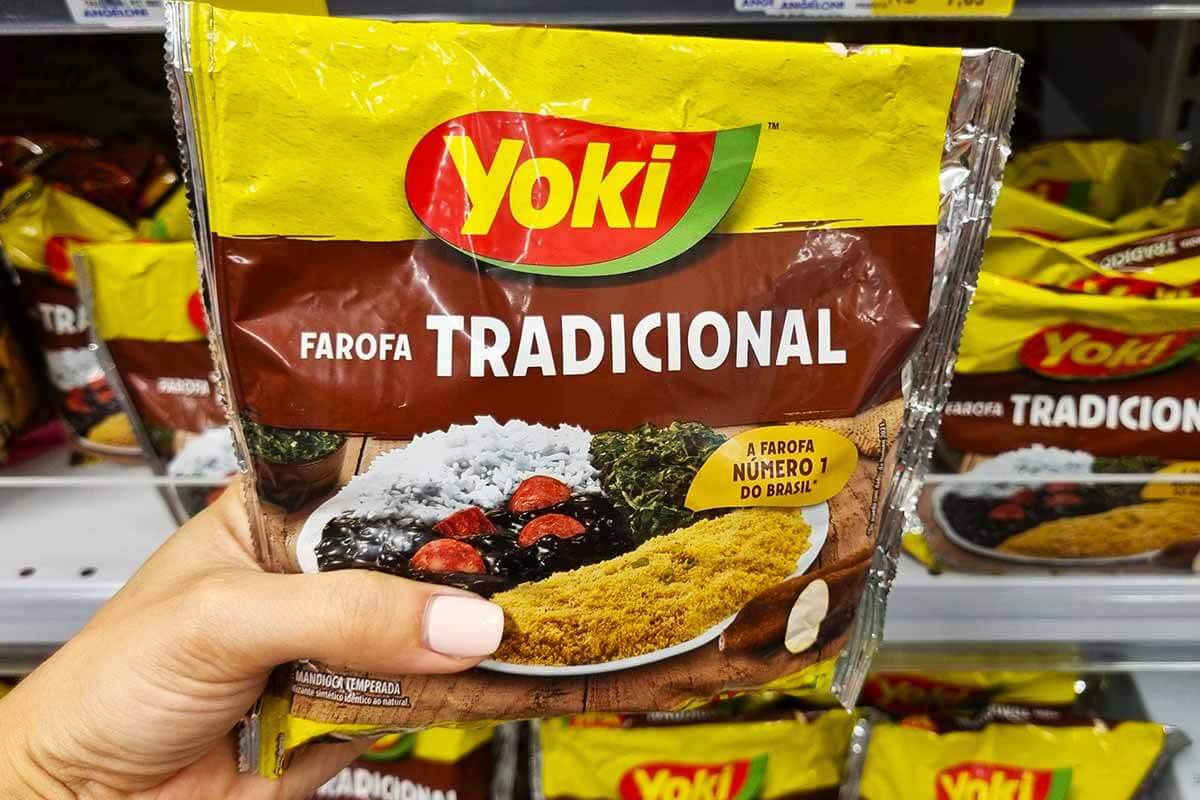
Pirão (Cassava Flour Cooked in Broth)
Popular in many regions of Brazil, pirão is cassava flour cooked in broth and enjoyed as a side dish.
The easiest vegan version to find is pirão de feijão preto (black bean pirão). If you’re lucky enough to come across vegan moqueca (I’ll explain what it is in the next section), you can have pirão made from the broth of your vegan moqueca.
- How to have a vegan pirão: ask for a plant-based broth, as this dish is often prepared with seafood, feijoada, or chicken broths.
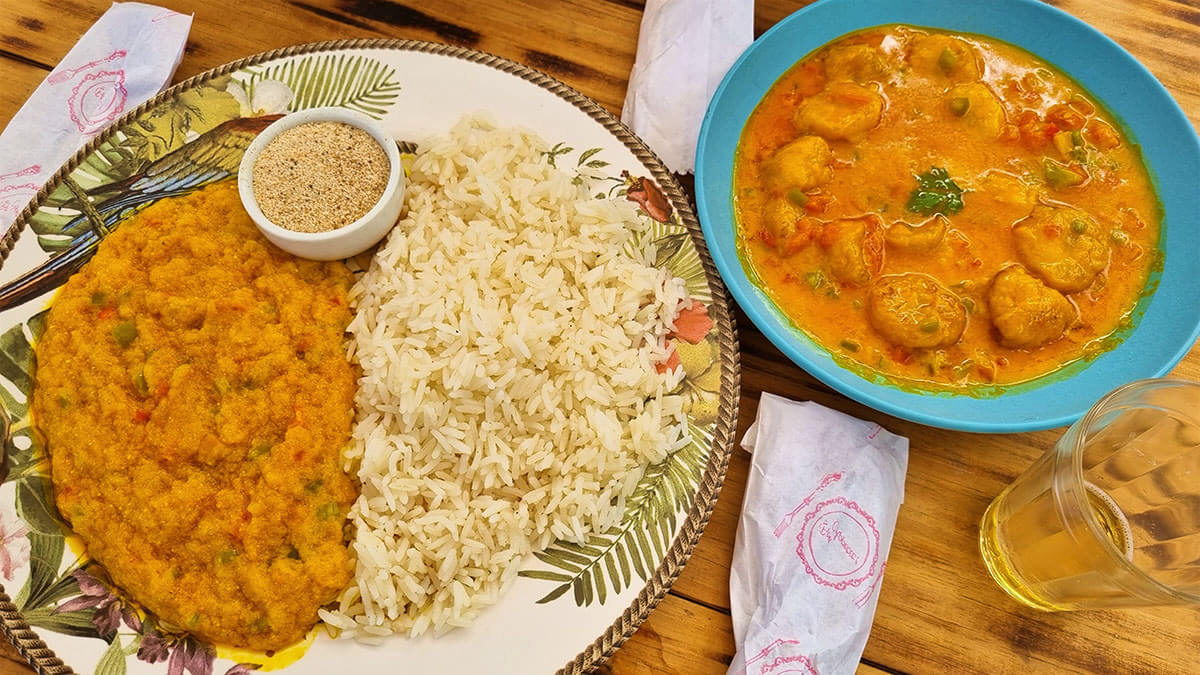
Pamonha (Sweet Corn Paste Wrapped in Corn Husks)
Oh, I love this one so much! Pamonha is a corn-based snack that comes in both sweet and savory variations (my personal favorite!). It’s particularly popular along the Brazilian coast, where you can find it at charming street vendor stalls near the beaches or conveniently packaged in supermarkets, ready to satisfy your taste buds.
- How to have a vegan pamonha: make sure it’s free from butter and milk, and that there’s no animal-based fillings.
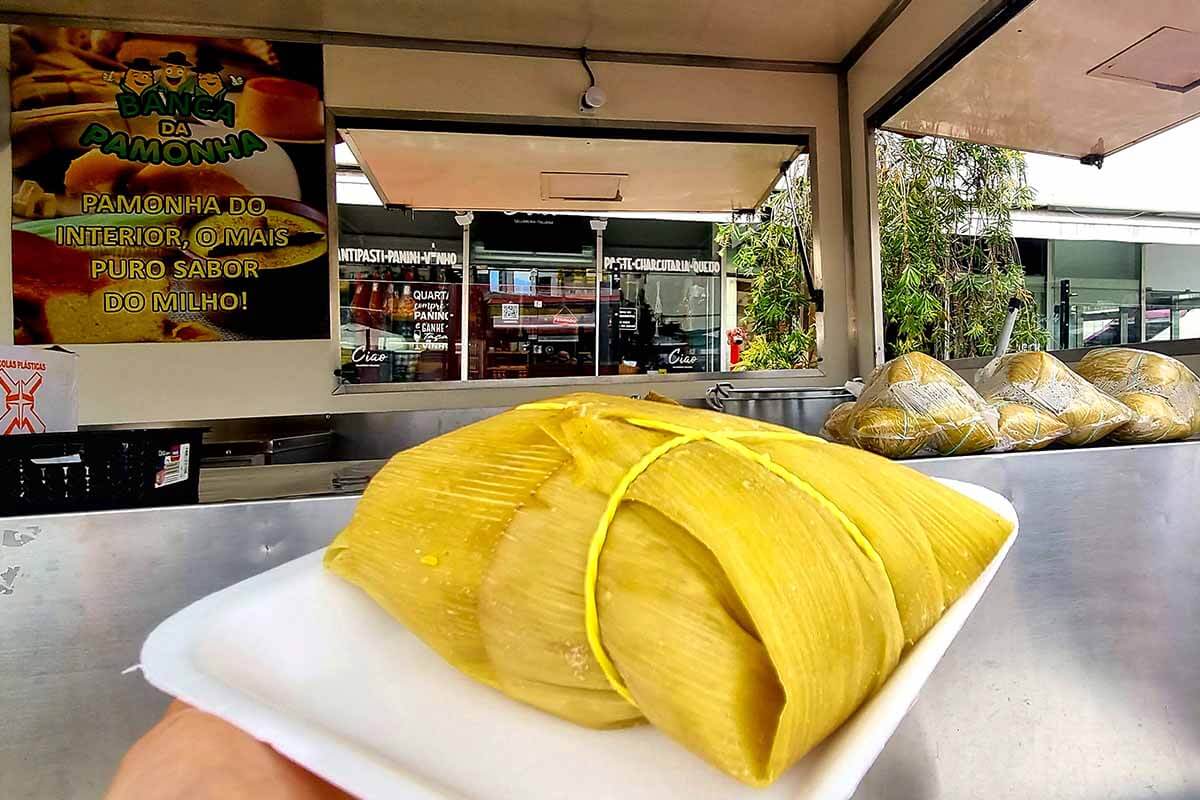
Acarajé (Black-eyed Pea Bun)
This mouthwatering street food from Bahia consists of a deep-fried black-eyed pea dough bun that is not only delicious on its own but is also commonly filled with a variety of flavorful ingredients. You’ve got to try this one!
- How to have a vegan acarajé: choose fillings like vinaigrette and chili sauce. If you’re lucky, you will find carurú and vatapá, the classic acarajé fillings, in vegan versions (without seafood).
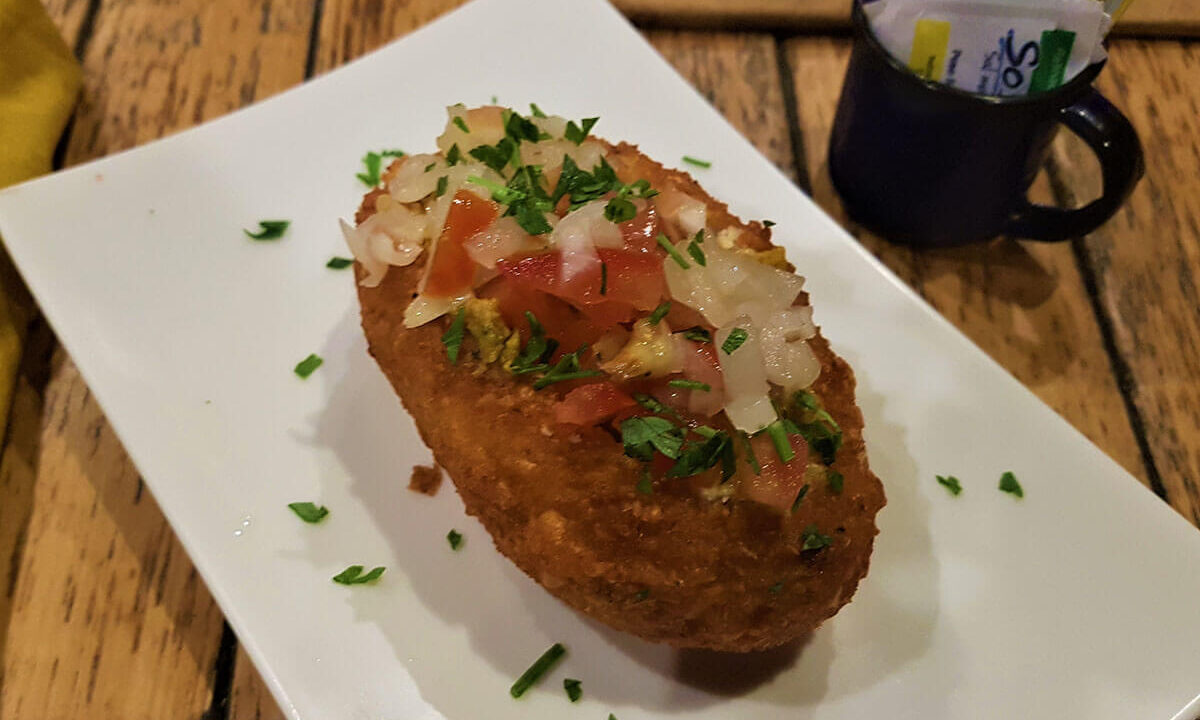
Tapioca (Cassava Starch Flatbread)
One of the most versatile street foods in Brazil, tapioca is a cassava starch flatbread that people can fill with sweet or savory ingredients. Originally from the Northeast, it’s currently popular across the country as a gluten-free alternative to bread.
- How to have a vegan tapioca: choose a vegan filling.
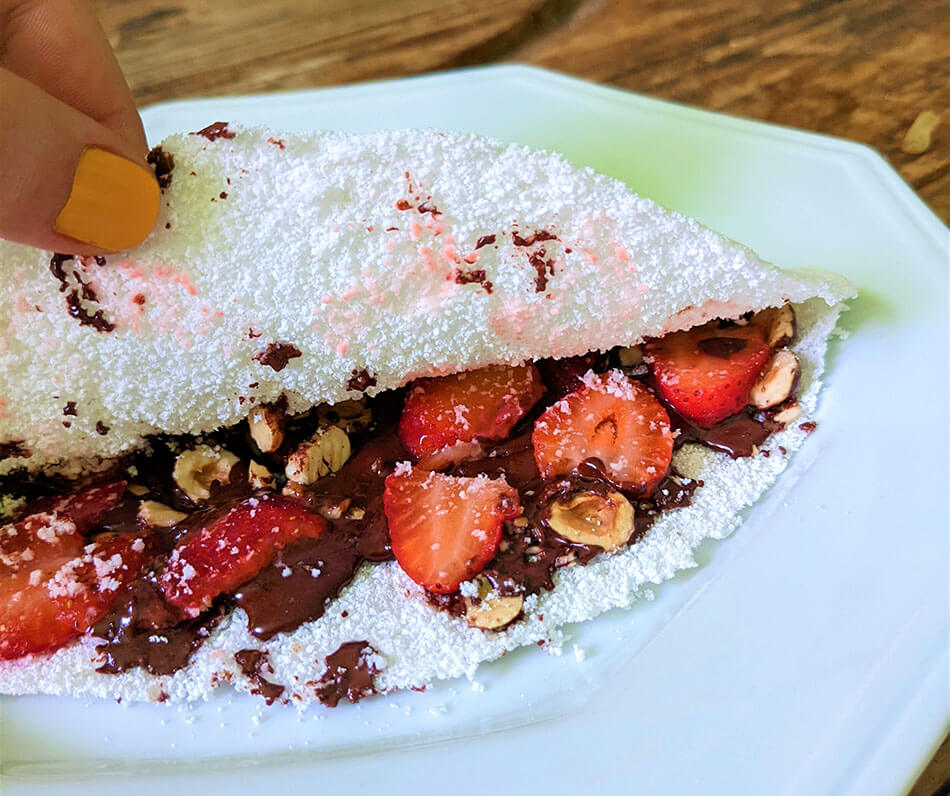
Must-try Brazilian traditional dishes (if you can find veganized versions):
While these are not traditionally vegan foods in Brazil, if you’re fortunate enough to come across veganized versions, then you should definitely try. They’re the ones that we Brazilians miss the most when decide to go vegan – and obviously we’ve already managed to create plant-based versions of all of them!
Coxinha (Little Thigh)
One of the most popular street food snacks in Brazil, coxinha is a deep-fried wheat dough traditionally filled with chicken. It can be veganized with creative plant-based fillings like jackfruit, mushroom or textured vegetable protein.
To have a vegan coxinha, not only must the filling be modified, but it’s crucial to ensure that no animal-derived broth has been incorporated into the dough, as it usually contains chicken broth.
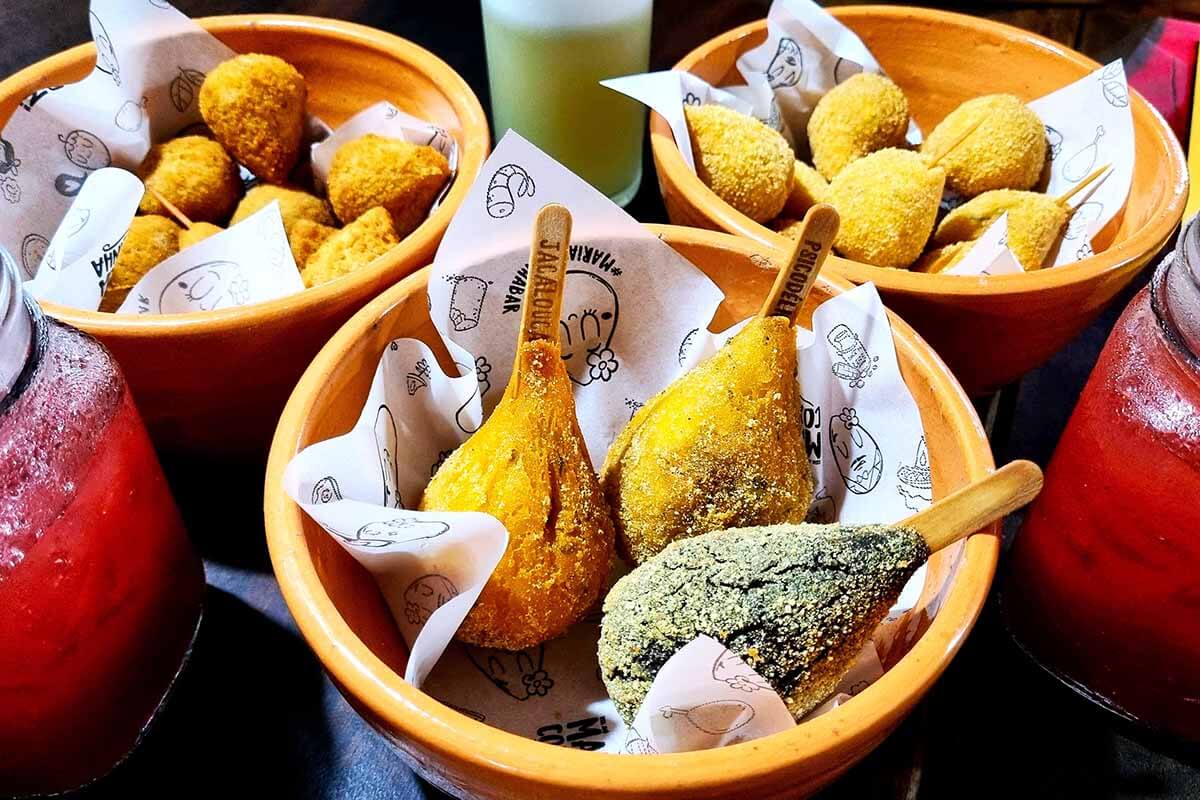
Pão de Queijo (Cheese Bread Balls)
These yummy baked cheese bread balls are a beloved Brazilian snack that people typically make with manioc starch, cheese and sometimes eggs. But guess what? You can also find vegan versions using the right mix of starch and plant-based cheeses or nutritional yeast.
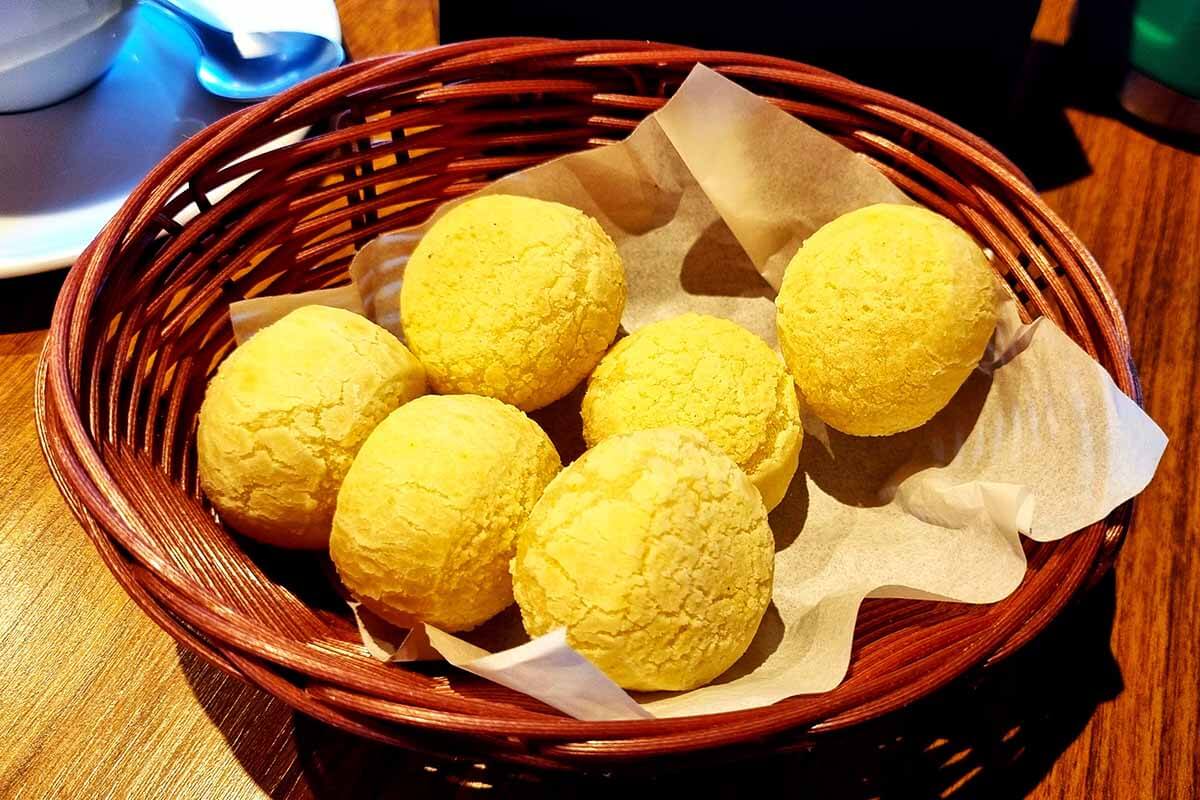
Feijoada (Beans Stew)
Brazil’s national dish, feijoada, is a hearty black bean stew that traditionally contains various cuts of meat, bacon and lard. Vegan feijoadas use plant-based sausages, smoked tofu and vegetables instead.
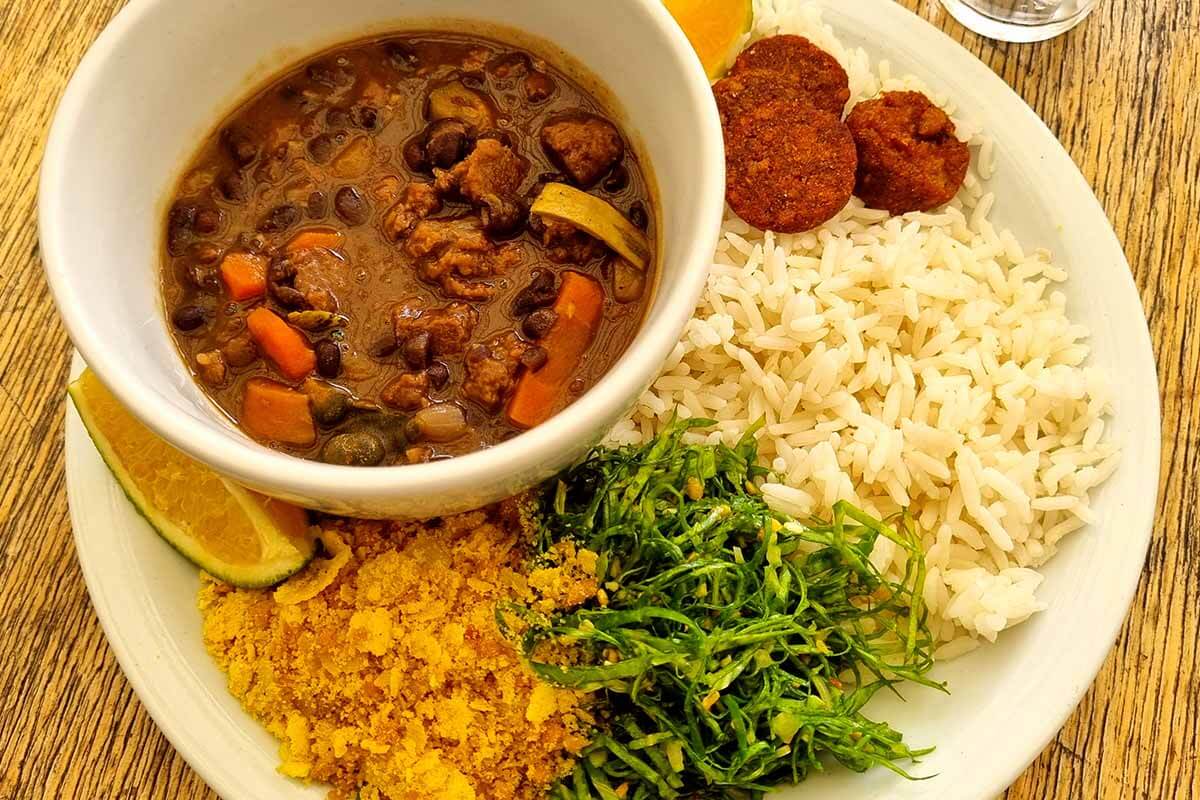
Churrasco (Brazilian Barbecue)
The Brazilian barbecue is all about those grilled skewers of different kinds of meat and many side dishes like farofa, rice, garlic bread, and salads. More than a meal, it’s a whole ritual. Whenever Brazilians want to celebrate something or simply hang out, they’ll suggest having a churrasco – at least in the South, where I come from.
But hey, vegans have come up with pretty creative ideas here! We’ve managed to veganize all those side dishes and swap out the meat for delicious plant-based alternatives. And you know what? Nowadays, we’re even seeing some vegan churrascarias (steakhouses) popping up in Brazil. I don’t know about you, but I’m super excited to give them a try!
Moqueca (Seafood Stew)
Super popular in the northeast of Brazil, moqueca is a seafood stew with coconut milk and azeite de dendê (a special type of palm oil that adds a vibrant red hue and taste to dishes). These last two are the key ingredients to making a mouthwatering moqueca. Then for a vegan version, just jazz it up with a bunch of veggies and maybe some mushrooms too.
Trust me, the vegan moquecas I had in Salvador were absolutely divine. My taste buds are tingling just thinking about them!
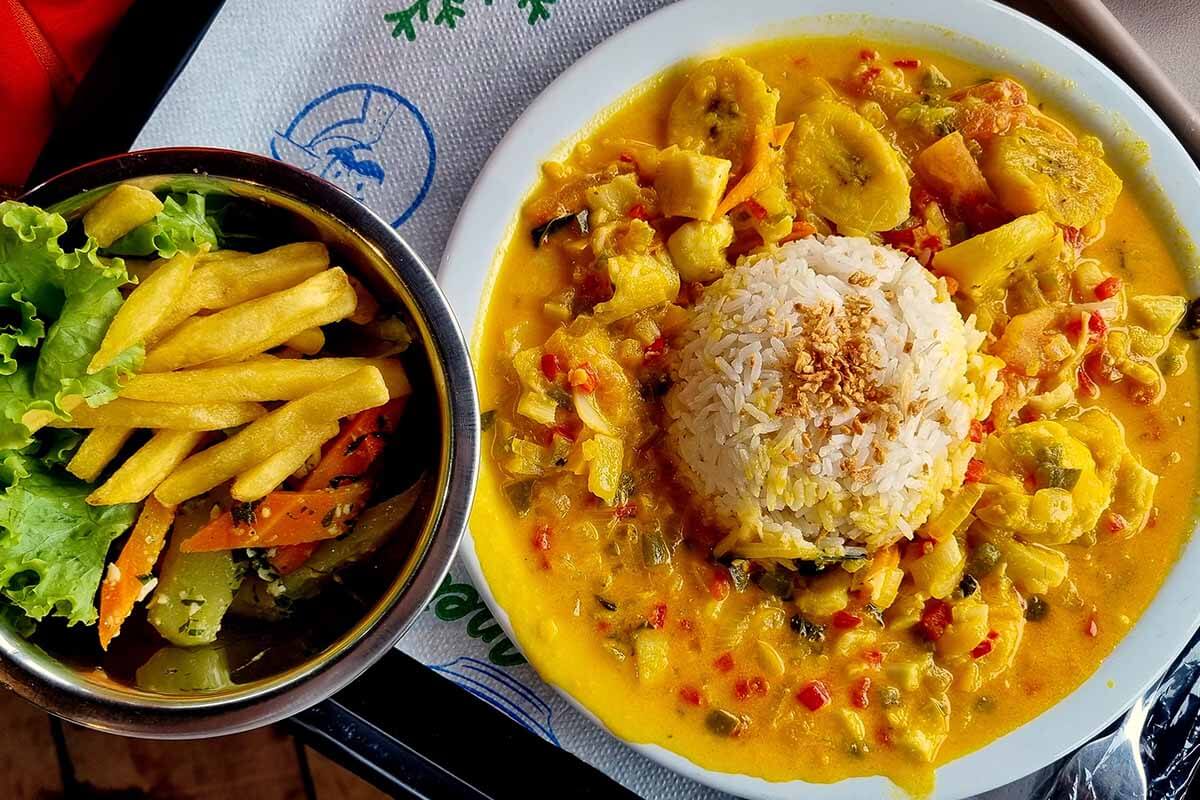
Brigadeiro and Beijinho (Fudgy Brazilian Truffles)
These much-loved bite-sized desserts are a staple at every Brazilian birthday party, both for kids and just kids at heart! As most desserts, they contain condensed milk. For brigadeiro, we mix in chocolate powder, and for beijinho, we sprinkle in some shredded coconut.
Thankfully, there are plenty of amazing vegan versions out there using ingredients like plant-based condensed milk, dates, coconut, and oats. And let me tell you, they’re not only healthier but also, in my humble opinion, even tastier than the traditional ones. They strike the perfect balance of sweetness, and you won’t be able to resist going back for seconds (or thirds).

Pudim de Leite (Milk Pudding)
Ah, the classic caramel flan dessert that steals hearts! Let me tell you, this was my absolute favorite dessert before going vegan — blame it on my grandmother. After every family lunch on the weekends, I was so looking forward to my pudim de leite.
But fear not, my vegan friends! There are fantastic vegan versions out there replacing the condensed milk and eggs from the original recipe with plant-based alternatives like agar-agar and nuts.
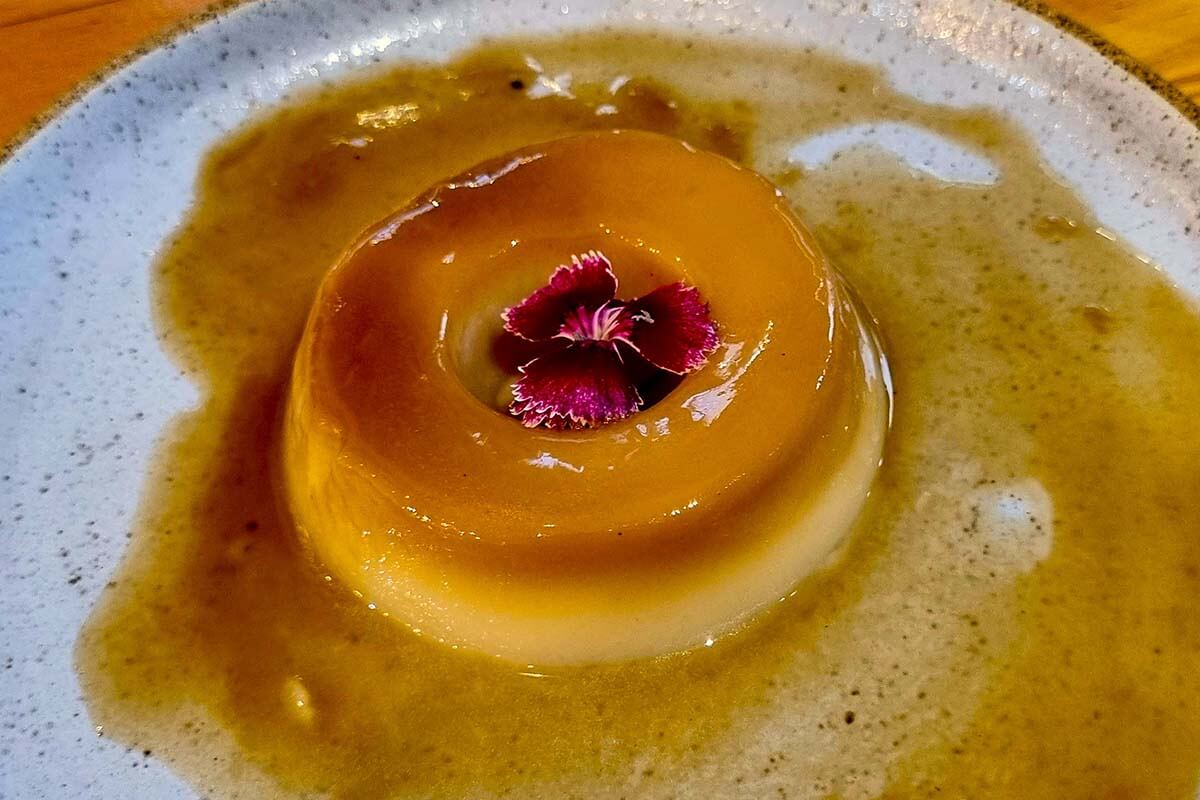
More Traditional Brazilian Food
As I have shown, due to Brazil’s continental size, traditional dishes can vary significantly across the country. This means that it would be practically impossible for me to cover all the regional specialties, but I hope I was able to give you a good idea of what to expect from Brazilian food 🙂
Traditional Brazilian Drinks
No vegan food guide to Brazil is complete without mentioning the local beverages. Here are some traditional drinks that are naturally vegan:
Supermarkets and Grocery Stores
If you prefer to cook your own meals or stock up on vegan snacks in Brazil, look for giants like Carrefour and Walmart, as well as many national supermarket chains. They offer a wide range of plant-based products, including both Brazilian vegan food brands and foreign brands.
While this is not always the case, you might discover vegan-friendly options even in smaller neighborhoods. Last time I was visiting my home town, I stumbled upon vegan kibbeh and non-dairy milk at a local supermarket near my mom’s house.
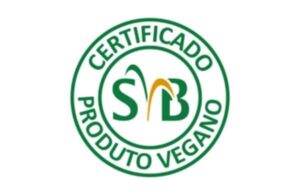
You can find a wide variety of products from different brands. I’ve gathered images of some of the biggest ones so you can easily spot them on the shelves:
Top vegan food brands in Brazil
To make your search even easier, consider using HappyCow, a popular app that helps locate vegan-friendly restaurants and grocery stores. It works in many countries, including Brazil.
Online Vegan Food Stores in Brazil
I know, online shopping is usually not the most convenient option when you’re traveling. However, in case you need to buy vegan groceries online, check these out:
- Casa Veg, Vista-se, and VegSim: located in São Paulo, deliver throughout Brazil
- Me Gusta Veg: in Curitiba, delivers throughout Brazil
- Veg.In: in Rio de Janeiro, delivers non-refrigerated products throughout Brazil
- Guia Vegano: in Florianópolis, delivers non-refrigerated products throughout Brazil
- Vegaria Empório: in Recife, offers local delivery only
Final Thoughts on Vegan Food in Brazil
Just like in other countries, vegan food is becoming increasingly available in Brazil. In addition to a decent number of online vegan food stores to rely on, you can find a wide range of plant-based products in traditional supermarkets and grocery stores.
When it comes to restaurants, many dishes are easily available in plant-based versions, while others require some adaptations. All things considered, you can enjoy a complete culinary experience with appetizers, side dishes, main courses, drinks, and desserts.
As the vegan movement continues to grow, it’s important to be aware that occasional misunderstandings might happen. Also, don’t expect to bump into a vegan restaurant when you’re simply walking down a random street. Especially in rural areas of Brazil, even vegetarian food tend to be scarce. So although it’s completely possible to eat well as a vegan traveler, it does require some planning.
If you need help to organize your vegan trip to Brazil, count on me! I’ll be happy to give you a free travel consultation to recommend not only the best restaurants, but also vegan-friendly activities and accommodations in the cities you want to visit. Trust me, with some careful travel planning, you’ll be able to fully savor the unique flavors of Brazilian cuisine even on a plant-based diet.
So pack your bags and get ready to embark on a delicious adventure. Bon appétit, or as Brazilians say, bom apetite!
